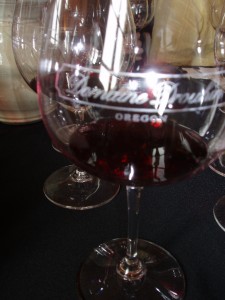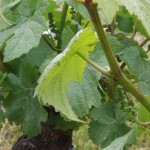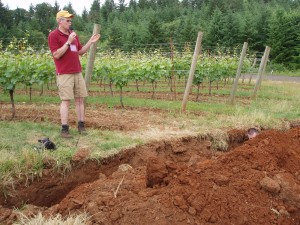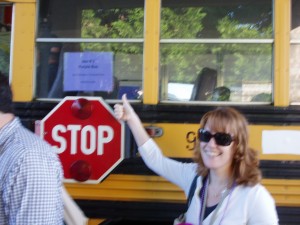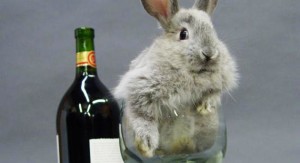We shouldn’t need an excuse to pull out all of the stops when it comes to entertaining, but then what would the holidays really be for anyway?
Whether you’re a wine geek or not, our secret to dialing things up a notch is to Go Big – literally. A “magnum” of wine is what you call the super-sized bottle of wine you may have started to see more often since Thanksgiving. Said bottle contains the equivalent of two “normal” bottles of wine. It is a sight to behold, and certainly makes that statement we never mind to make.
No contest, magnums make for a fantastic gift for wine lovers. But how often do you have enough of a crowd to warrant actually opening a large-format bottle? Our staff relishes the chance.
Here are ten wines available in magnums we think are perfect for celebrating. Make an impression this holiday season!
Sparkling.
Adriano Adami Bosco di Gica Valdobiadene Superiore Prosecco| Veneto, Italy
The wonderful world of sparkling wine is global – you don’t always need to travel to Champagne, France for an enticing or satisfying selection! Here Adami over-delivers for the category, producing a lively, quaffable sparkler.
Billecart-Samon Brut Rosé | Champagne, France
Behold, one of our absolute favorite producers of Champagne, let alone sparkling rosé. Seeing this wine packaged in a magnum – well, we caught our breath! Here the devil is in the details: tiny beads of joy oh-so-delicately deliver tangy red fruits first to your nose, and then to your palate. Notes of chalk-board erasers are a time machine back to less-harried, wonder-rich times.
Ployez-Jacquemart Extra Quality Brut | Champagne, France
Where Billecart-Samon scores high in the ‘delicious-subtlety’ category, Ployez-Jacquemart does so with equal enthusiasm in the ‘delicious-decadence’ category. Generous orchard fruits are lifted by citrus and quince – and that’s just the beginning! Toasty and lush with gratifying brioche elements, we just love how this wine wraps itself around your senses….
Rosé.
Bodegas Muga Rosado| Rioja, Spain
Nothing says party-perfect more effortlessly than a magnum bottle of sacred (read: somewhat scarce) rosé wine! Here the historic winery Bodegas Muga blends Grenache with white Viura grapes and a splash of Tempranillo. Aging the wine briefly in large oak vats adds body and nuance, while lees aging contributes subtle milk chocolate notes. The result is supreme – a dry but lifted, round-edged, winter-ready but refreshing style that can elevate holiday meals just as easily as it can coolly welcome friends. (Grab one if you see one – Rebecca did!)
White.
Chateau Montelena Winery Chardonnay | Napa Valley, California
This wine packs both a delicious and historic punch: established in 1882, Chateau Montelena is one of the oldest wineries in the United States – and the 1973 vintage of this wine won the famous Judgement of Pairs in 1978! Is it still worth its muster? In a word, YES. The fruit for this wine was selected literally grape by grape. With only 10% new oak used and a cool growing season in play, this white is as dramatic as it is crisp!
Weingut Josef Leitz, Rüdesheimer Magdalenenkreuz Spätlese Riesling| Rheingau, Germany
There’s just something about colder days that beg for a glass of something decadent, something you can cozy up to, something that somehow also rouses your spirits and delivers a surprise. Here one of our absolute favorite German winemakers, Josef Leitz, delivers all of that in one uncorking. Minerality creates a snappy tension with the fruity, sappy, layered flavor profile of this wine – and it is delivered in an abundant(ly), delicious package.
Red.
Buena Vista Winery “The Count” | Sonoma, California
A blend of Zinfandel, Syrah, Merlot, Petite Sirah and Cabernet Sauvignon, “The Count” shows its innovative roots while showcasing the bold potential the Count himself saw in California wines. Medium bodied, this wine is as packed with purple and black fruits as it is with earth-driven nuance. Burnt caramel and cedar notes give it that touch of winter-time pizazz we all crave this time of year. Easy drinking and velvety smooth, this toothsome wine is a crowd-pleaser!
Burgess Cellars Library Reserve Cabernet Sauvignon (2002) | Napa Valley, California
Properties like Burgess are what put the Napa Valley – and Cabernet grown here – on the map. Determined to make a style of wine expressive of terroir, Tom Burgess was wise to snap up this plot of land in the Howell Mountains. Here above the fog, vines 60+ years old have become one with the mineral-rich, volcanic soil. Opulent yet still ‘pretty’, this wine is a teenager, packed with dark berry fruit, dusty earth and just a hint of mocha.
Chateau de Saint Cosme Rouge | Cotes du Rhone, France
For (at least) two of us on staff, our love affair with European wine began with Syrah from the Rhone Valley, France. Wines like this iconic one are the reason why: fresh, purple-floral aromatics awaken your senses first, followed by a decadent palate rich with dark fruit, hints of spice and notes of saddle leather and bacon fat (yes.. bacon!). Welcome to the club!
Domaine Serene Vineyards Pinot Noir | Evenstad Reserve | Willamette Valley, Oregon
Oregon's Willamette Valley is thought “the Promised Land” for producing acclaimed, Burgundian-styled reds, aka exceptional Pinot Noir. And Domaine Serene is one of the darlings of this young yet heralded wine region. We were downright gleeful to discover their award-winning, flagship wine is available in magnums. Buyer beware: the Evenstad Reserve is a super-silky, complex wine that delivers a wallop of delight!









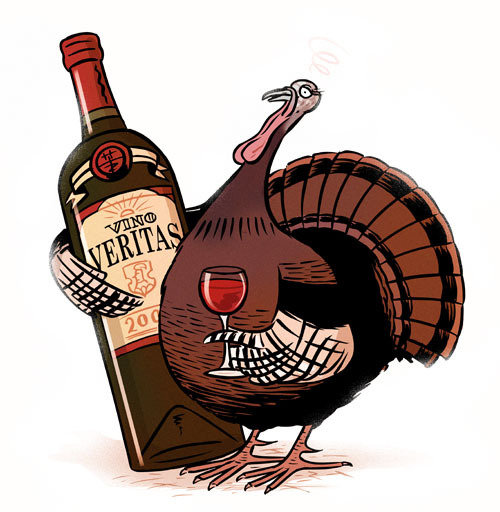
 We landed in the northern part of the Rheinhessen as the sun broke through the clouds "officially" and some more late-springlike (n-o-t summer) warmth with it. Tromping through the much more rolling hills/vineyards in these "conditions" was a treat. Assistant Winemaker Oliver Mueller was our guide, providing tremendous insight about their more Burgundian-like spot within the Rheinhessen appellation as well as the non-Riesling grapes they cultivate (though, of course, Riesling does have a very large presence, too). Silvaner, Weissburgunder (Pinot Blanc), Grauburgunder (Pinot Gris), Sauvignon Blanc, Merlot and (of course) Spaetburgunder (Pinot Noir) all have a home here.
We landed in the northern part of the Rheinhessen as the sun broke through the clouds "officially" and some more late-springlike (n-o-t summer) warmth with it. Tromping through the much more rolling hills/vineyards in these "conditions" was a treat. Assistant Winemaker Oliver Mueller was our guide, providing tremendous insight about their more Burgundian-like spot within the Rheinhessen appellation as well as the non-Riesling grapes they cultivate (though, of course, Riesling does have a very large presence, too). Silvaner, Weissburgunder (Pinot Blanc), Grauburgunder (Pinot Gris), Sauvignon Blanc, Merlot and (of course) Spaetburgunder (Pinot Noir) all have a home here. The next day took us yet still farther South. We had an appointment at
The next day took us yet still farther South. We had an appointment at  Our vineyard tour was also astounding. In the distance the Rhine river - and France! - terraces of unique volcanic soil lay in front of us. Here, too, they employ various techinques to mitigate using too many chemicals in the vineyards. The wine bottles hanging on the line PICTURED RIGHT are filled with sugar water, to keep pests elsewhere and harmony happening naturally in the vineyards! Brilliant for its simplicity and effectiveness.
Our vineyard tour was also astounding. In the distance the Rhine river - and France! - terraces of unique volcanic soil lay in front of us. Here, too, they employ various techinques to mitigate using too many chemicals in the vineyards. The wine bottles hanging on the line PICTURED RIGHT are filled with sugar water, to keep pests elsewhere and harmony happening naturally in the vineyards! Brilliant for its simplicity and effectiveness. After two full days in the Mosel it was time to go vineyard/region-hopping as we drove South through German wine country. To save time on the way to our first appointment in the Rheingau, about two hours from the Mosel, we took a car ferry (so cool!) across the Rhine River. It deposited us on the other bank just down the slope from Josef Leitz's winery. (Perhaps starting with the ferry experience itself, the visit at Leitz offered not just great wine tasting, but also a terrific lesson in German history - e.g. ferries keep transport efficient and fluid, as many key bridges were destroyed in World War II).
We found Johannes Leitz (said "Lights" - the winery is named for his father Joseph, who died when Lietz was only 2 years old) with his gardening gear on, wheelbarrow in hand. He quickly terminated his home gardening duties, ushered us into his immaculate tasting room and jumped right into a detailed discussion about the Rheingau; terrific photos told the story of its unique terroir, including the microclimates and varied soil types that 'co-exist' just meters from each other. (I HIGHLY encourage you to visit his
After two full days in the Mosel it was time to go vineyard/region-hopping as we drove South through German wine country. To save time on the way to our first appointment in the Rheingau, about two hours from the Mosel, we took a car ferry (so cool!) across the Rhine River. It deposited us on the other bank just down the slope from Josef Leitz's winery. (Perhaps starting with the ferry experience itself, the visit at Leitz offered not just great wine tasting, but also a terrific lesson in German history - e.g. ferries keep transport efficient and fluid, as many key bridges were destroyed in World War II).
We found Johannes Leitz (said "Lights" - the winery is named for his father Joseph, who died when Lietz was only 2 years old) with his gardening gear on, wheelbarrow in hand. He quickly terminated his home gardening duties, ushered us into his immaculate tasting room and jumped right into a detailed discussion about the Rheingau; terrific photos told the story of its unique terroir, including the microclimates and varied soil types that 'co-exist' just meters from each other. (I HIGHLY encourage you to visit his  The first stop on our tour was the Mosel - probably the most well-known German wine producing region, and best known for its Riesling. I've joked that I would never want to work harvest in the Mosel because the slopes are so bloody steep and narrow that I would put down my bucket of grapes (hand-harvesting is the only way to do it as no machine could manage the incline) and accidentally kick it over with my foot, sending hundreds of dollars down the hill with it. Having been there now, I can say that even as a fairly agile human, I would definitely not sign up first for the task. And it is oh-so-precious fruit indeed.
The first stop on our tour was the Mosel - probably the most well-known German wine producing region, and best known for its Riesling. I've joked that I would never want to work harvest in the Mosel because the slopes are so bloody steep and narrow that I would put down my bucket of grapes (hand-harvesting is the only way to do it as no machine could manage the incline) and accidentally kick it over with my foot, sending hundreds of dollars down the hill with it. Having been there now, I can say that even as a fairly agile human, I would definitely not sign up first for the task. And it is oh-so-precious fruit indeed. AJ Adam was next on our Mosel tour - a recommendation from Konstantin Weiser on Day 1 of the trip. We took our chances and popped by, catching Andreas coming home from the vineyards by tractor for a little lunch break. Two hours later we had tasted a delicious (ample) sampling of Rieslings from his portfolio. A family resemblance was present among these wines also - a ripeness of fruit cut with nearly searing acidity and a wet-stone-meets-talc-like minerality texture on the tongue. These wines were compelling for their sleek precision - yet elegance!
AJ Adam was next on our Mosel tour - a recommendation from Konstantin Weiser on Day 1 of the trip. We took our chances and popped by, catching Andreas coming home from the vineyards by tractor for a little lunch break. Two hours later we had tasted a delicious (ample) sampling of Rieslings from his portfolio. A family resemblance was present among these wines also - a ripeness of fruit cut with nearly searing acidity and a wet-stone-meets-talc-like minerality texture on the tongue. These wines were compelling for their sleek precision - yet elegance!